Brewing in the cold
brewing franceSummary #
First IPA brewed with homegrown hops, new paddle, and sub-zero brewing.
New paddle #
I received this good looking, custom-made mash paddle. Malt clumps better watch out!
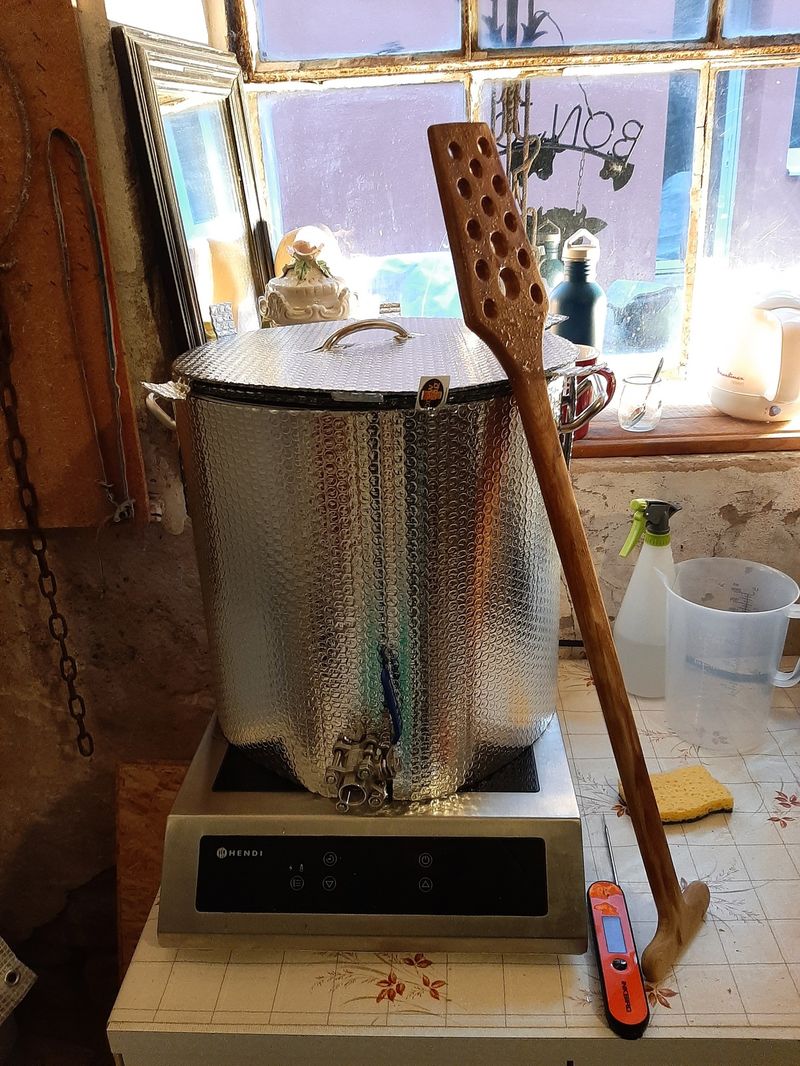
The bad boy in action:
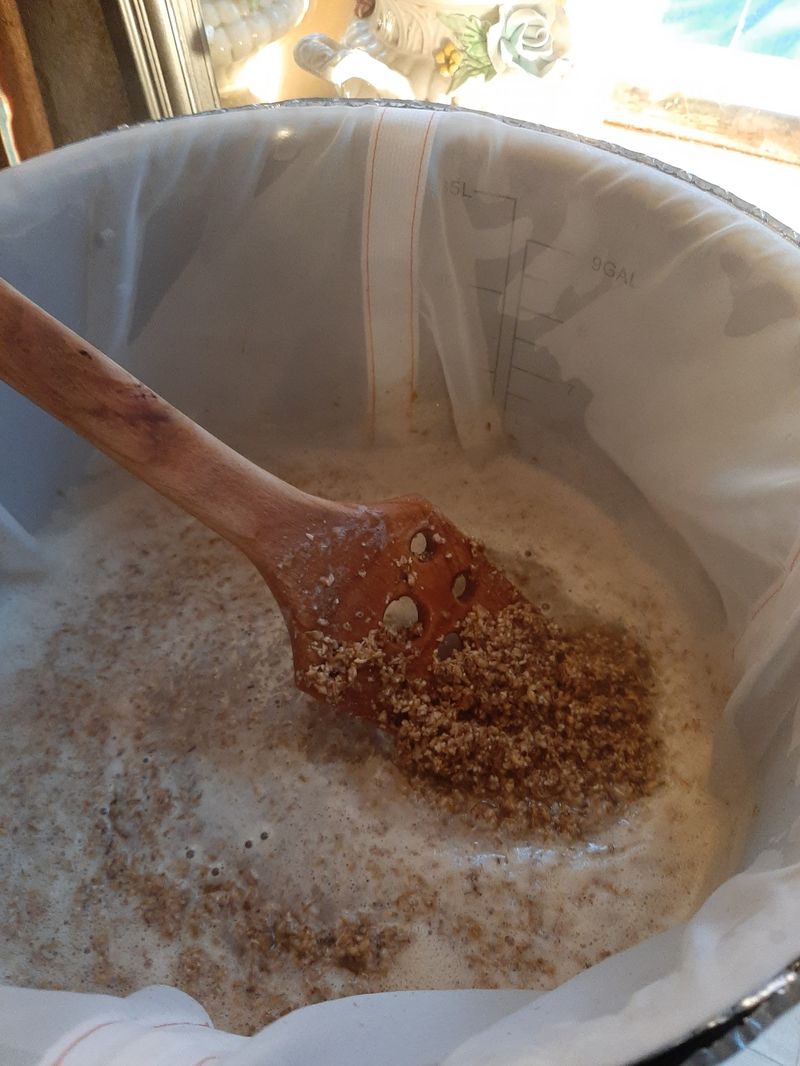
IPA 85 #
A few firsts:
- First IPA brewed with homegrown hops. Used commercial Citra for bittering, and homegrown Centennial and Chinook for aroma. Dry-hopped in a nylon bag, whole hops take a lot of space.
- First beer fermented in a kegmenter (keg + blowoff tube). I used a floating dip tube to dispense directly from the keg. No transfer = less cleaning, less process, no oxidation!
Keg open on the 16th of Dec., busted on the 25th. Success.
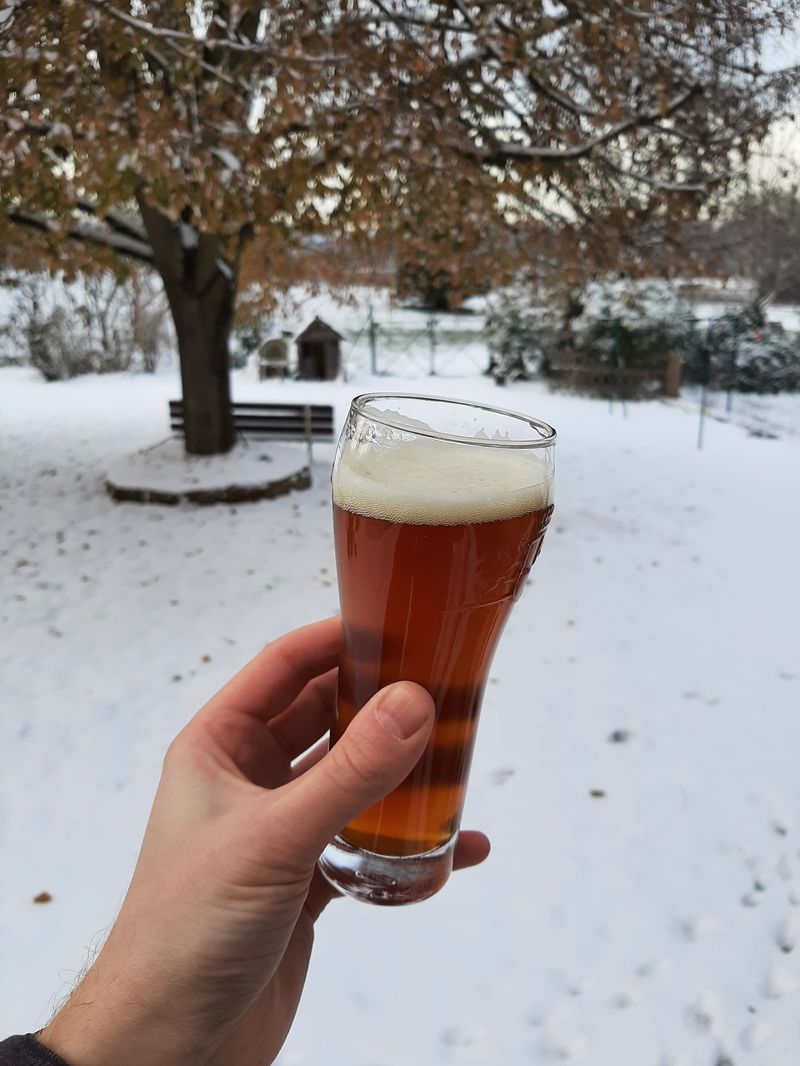
Next time:
- on the recipe: less Munich malts (Light and Dark) to reduce perceived sweetness and lighten the color.
- on the process: need a way for the dry hopping to not interfere with the floating dip tube. Could've poured 1-2 more liters if the floater hadn't been stuck.
- on the process (bis): why not carbonating directly with the CO2 produced by the fermentation!
Brewing in the cold #
On Pilsner brew date, outside temperature was about -10 °C and the temperature in the brewery close to 0 °C. I had to put a heating belt in the kegerator to prevent the beer from freezing.
But it makes cooling easier! The chilling pump immersed in this barrel of frozen water (from the chilling of the previous brew) did a quick job.
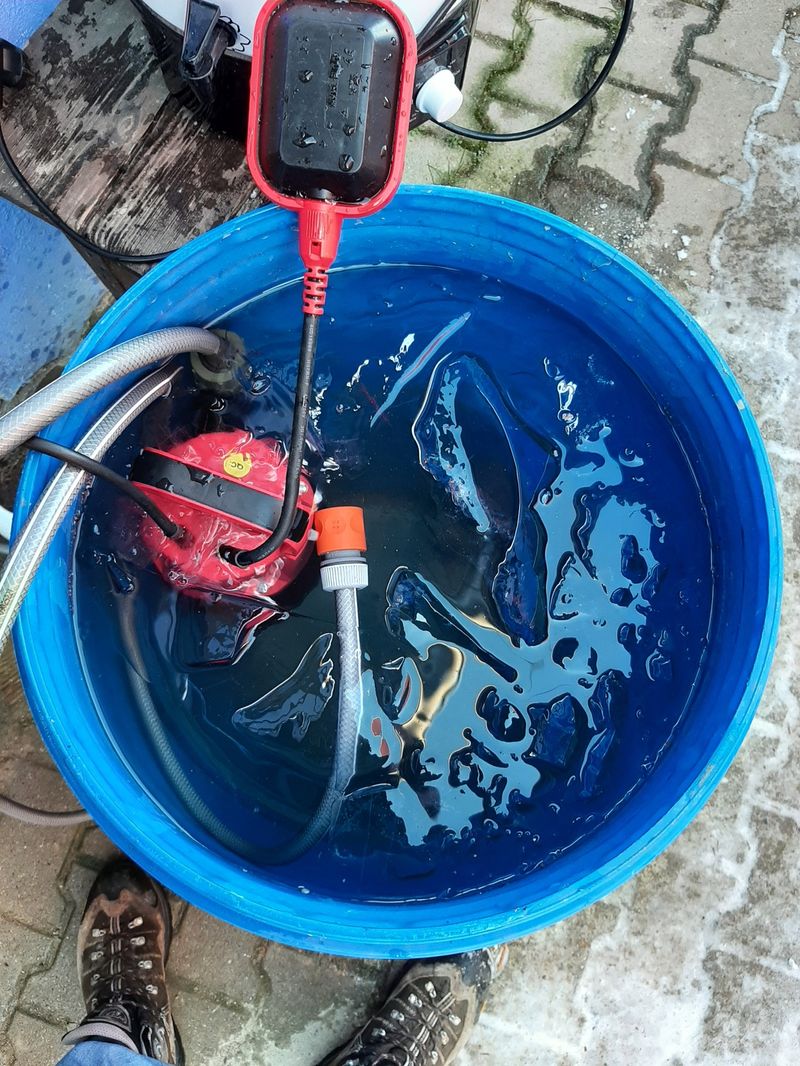
Transfer to fermenter, the Pilsner is looking pretty!
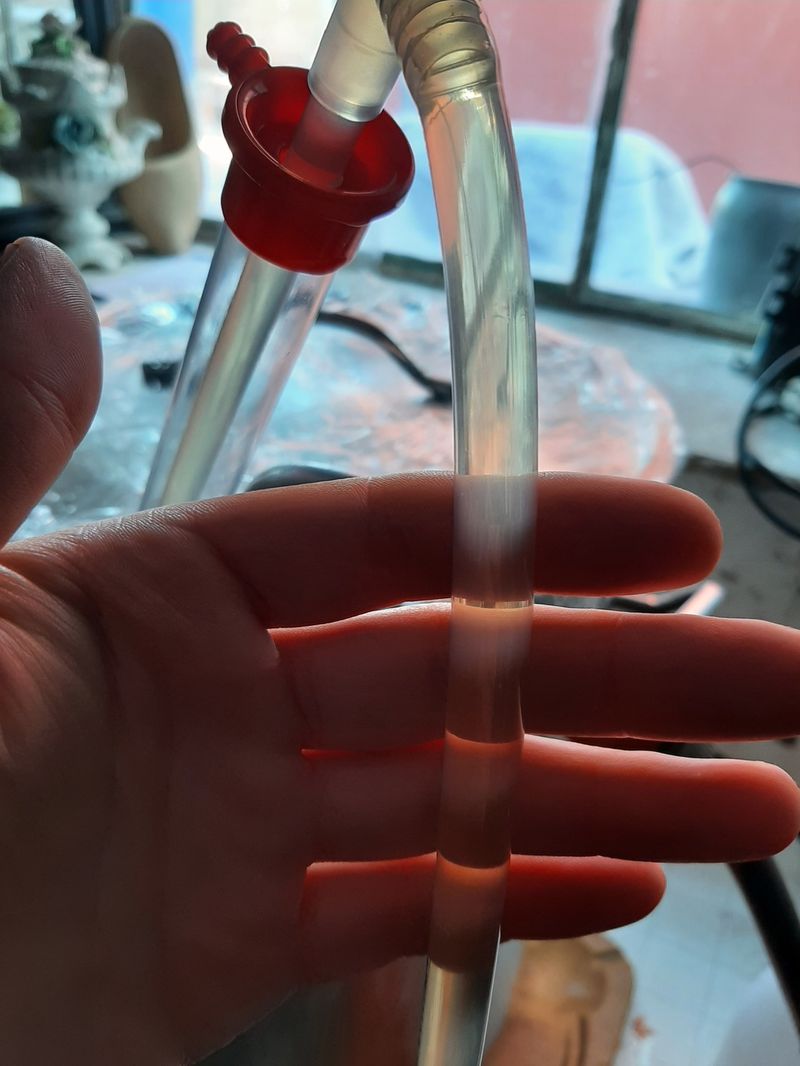
Getting to those last few degrees, easy when the air temperature is -10 °C.
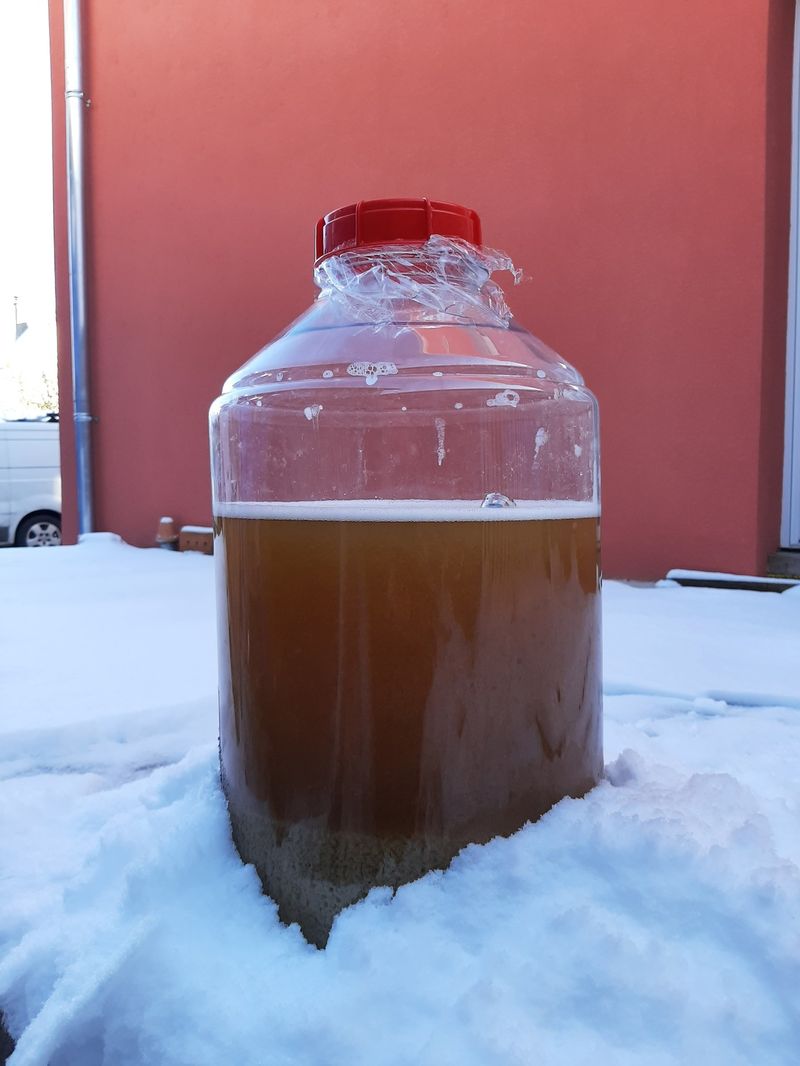
- Next: Kettle sour process
- Previous: Brasserie du Tilleul, reloaded